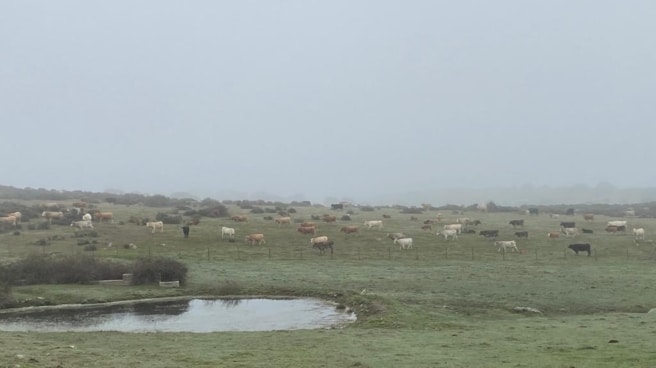

Full pond on an extensive livestock farm
Farmers and ranchers’ eternal gaze to the sky finds its first fruits with the arrival of autumn. Heavy rains especially made themselves felt in Castile and Leon, Galicia and the northern half of Extremadura, places where most of the Spanish livestock is concentrated. Except, water facilitates the sowing of winter grains such as wheat, barley and rye, work that has lasted since then From October to February.
Step storms like Alain and Bernard on the peninsula they filmed early autumn in Spain. Warnings of wind, rain and waves were issued as early as October, while grain farmers and large livestock producers enjoyed the cloud relief. “Except in extreme cases, These rains were more than positive for the country’s large harvests,” he said. indicate sources of technical services PEN (Agrarian Association of Young Farmers) in conversation with Independent.
On the part of the agricultural organization, it is believed that Conclusions will be known when Storm Bernard ends.although they require it “In most parts of the country we are still in a drought situation. The normal thing is that from this moment the reservoirs begin to recover. The assessment can only be positive. It’s great news that fall weather is starting to approach. We hope so precipitation becomes extensive and regularbecause the problem is that It’s raining harder and harder because the precipitation is concentrated rather than spread out over time.”indicate ASAJA technical service.
Heavy rains contributed to large harvests
From 11 to 17 October accumulated more than 30 l/m2 over large areas Cantabrian coast, Galicia, most of Castile and Leon, Extremadura, western Andalusia, coastal areas of Catalonia and the eastern islands of the Balearic archipelago.in accordance with AEMET (State Meteorology Agency)
ASAJA believes that October showers will be positive for those who on these dates are the most large harvests of the Spanish countryside: olives and herbaceous crops. “This rain is fantastic for the olives. There will be places where a hurricane will cause damage, but to be clear: You will gain more oil than you lose. This water is excellent for olives and olive trees,” says ASAJA.
feeling transmitted from the field “relief and excitement.” ASAJA technical service sources emphasize the importance of these rains for the sowing of winter grain crops such as wheat, barley and rye. In Spain on average 6 million hectares of grain, that makes him “the sector with the largest territorial base and distribution throughout the territory”, according to the Ministry of Agriculture, Fisheries and Food. Of the areas planted with grains in 2020 (excluding rice), almost 94% were winter grains.
“If we worked on land, it would be a disaster. The cost situation is tough, but at least it’s raining, which is encouraging people sow because there are more favorable conditions for seeds. Having a good climate makes adoption easier and ensures that preparation, fertilization and sowing are carried out under favorable conditions,” states ASAJA.
Respite for extensive livestock farming
In the past year, extensive livestock farming has been exposed to serious threats such as avian influenza, sheep pox, tuberculosis and bovine hemorrhagic disease; However, the rains provide respite for ranchers. “For pastures, this water is salvation,” notes ASAYA.
Association technical specialists farmers note that ideally it would be to have “real autumn” before the winter cold, so that the grass grows sufficiently, which reduces feed consumption: “The nutritional supplement has reduced its cost compared to last year, but it is still expensive. Not to mention the problem of feed and straw, which are prohibitively expensive.”
Temperature drop accompanying precipitation, becomes the main weapon combating hemorrhagic disease in cattle, The culprit is the culicoides mosquito, the same insect that carries bluetongue disease. As the temperature drops, The prognosis is that the mosquito will die and the spread will end.
Source: El Independiente